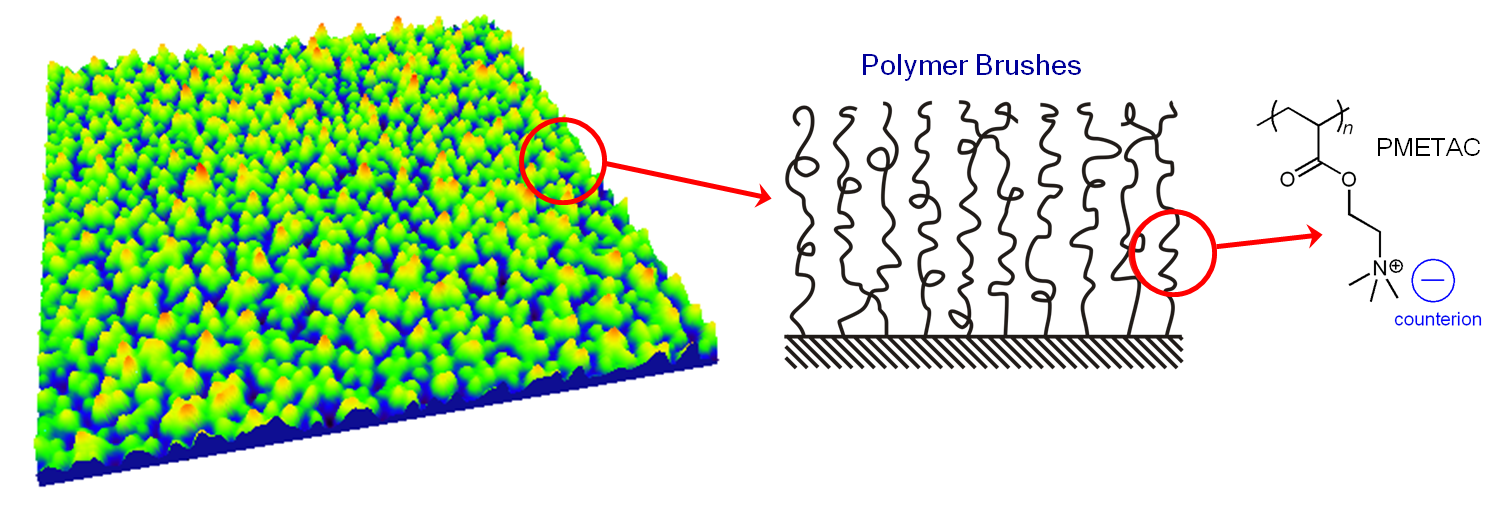The chemistry that occurs at interfaces plays a determinant role in our everyday life, ranging from biological to large–scale industrial processes. This can be observed when following the development of novel biosensors or efficient catalysts based on nanomaterials. During the last decades, surface science and materials engineering have made remarkable progress on the molecular design of interfaces. Most of this progress had been based on the modification of surfaces using thin polymer films. In recent years, research into surface modification has focused on the use of the so–called “polymer brushes”. These particular macromolecular architectures are polymer chains tethered at one end to a solid substrate forming a brush–like layer of elongated coils. When dealing with polyelectrolyte brushes the conformation of the brush–like layer is dominated by electrostatic interactions between segments of like charges. Changes in ionic strength, pH and solvent properties lead to markedly different surface properties due to transitions in the polymer brush between stretched and collapsed states.
In this project, our research interests extend from fundamental science to technological applications. We use soft building blocks to engineer multifunctional surfaces with tailored chemical, biological and physical properties.



